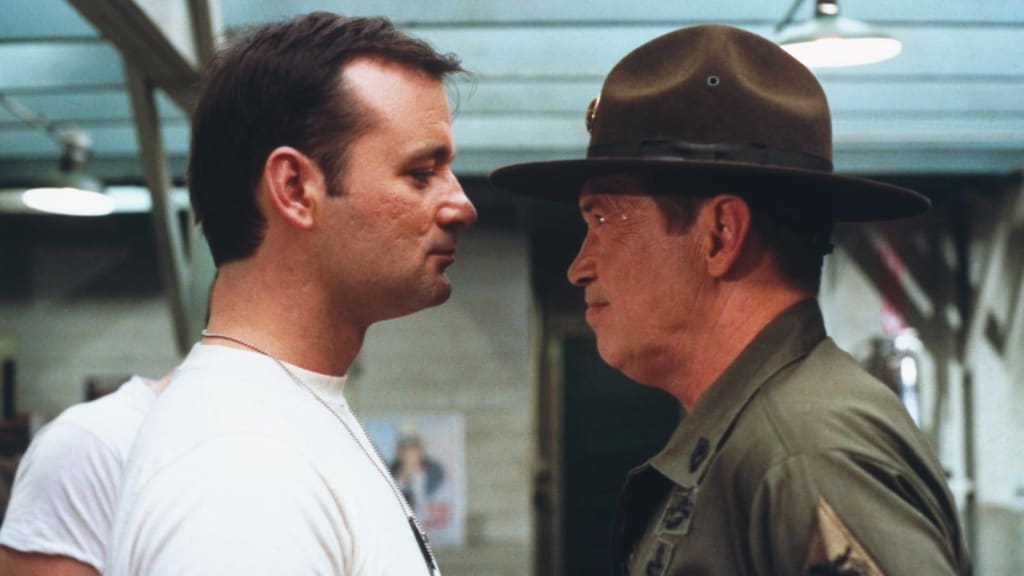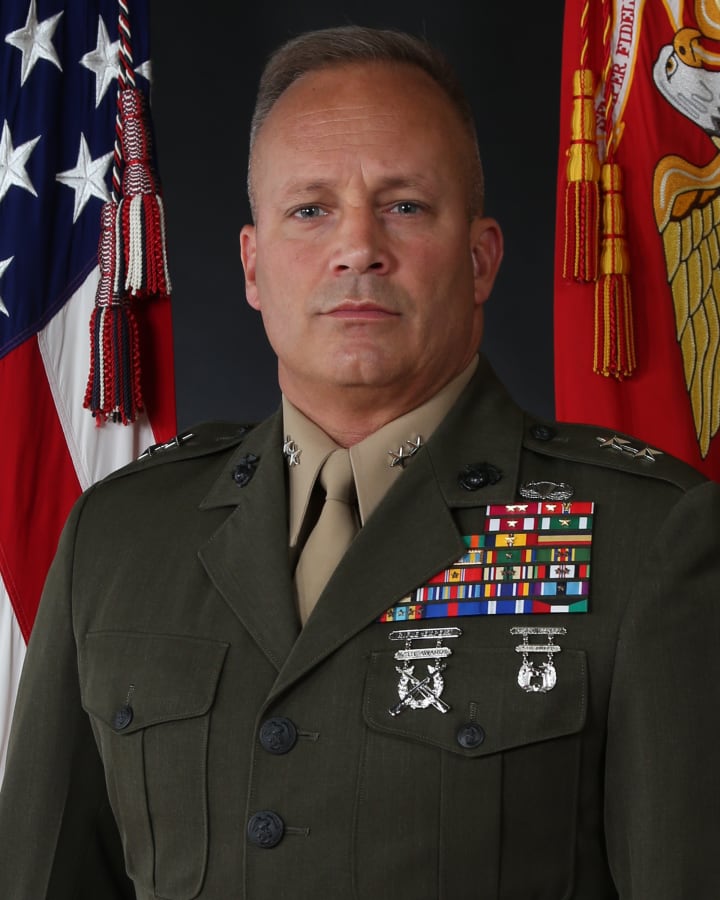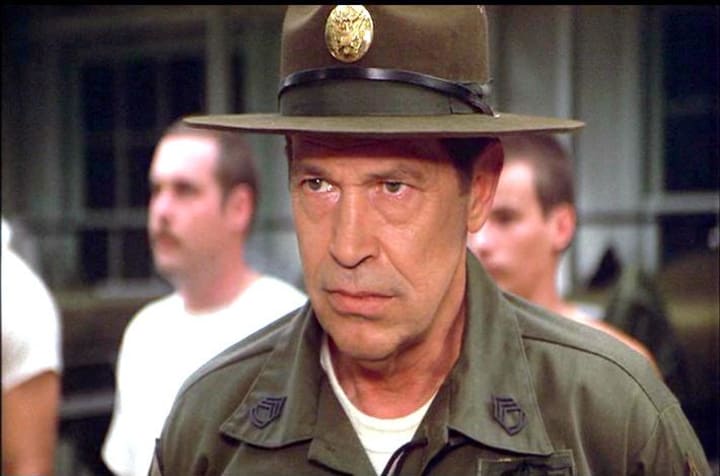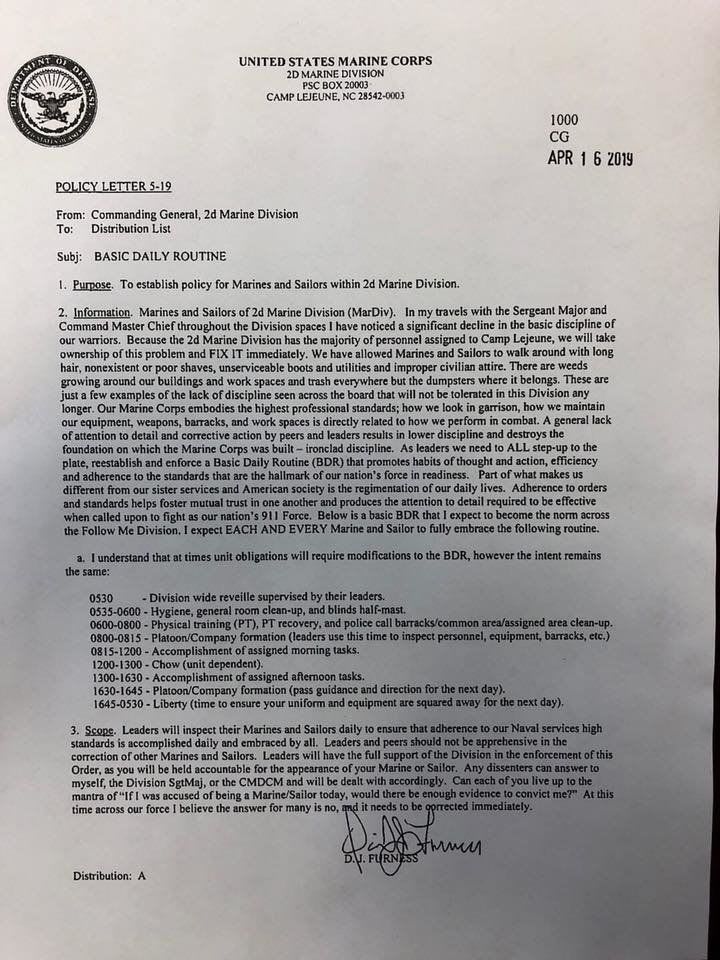Being a "Big Toe" Leader
When does micromanaging work, and when does it not work, in today's organizations?

For many of us "of a certain age" (meaning that we carry an AARP-card in our wallet), we fondly remember the movie Stripes, which came out—believe it or not—almost four decades ago, way back in 1981. Stripes became a huge box office hit, and went a long way in helping Bill Murray become, well, "Bill Murray"—a comedy legend and yes, now a golf brand.

Now not to be a film critic or a sociologist, Stripes was just one of those milestone movies. Stripes became a huge box office hit, and went a long way in helping Bill Murray become, well, "Bill Murray"—a comedy legend, and yes, now a golf brand. It also gave us lots of catchphrases ("Lighten up, Francis!"; "Just the facts, Jack!"; "The 'Aunt Jemima Treatment,'"; "We're Americans, with a capital 'A', huh?": and many more) that now live on as the GIFs and memes that we still routinely use, even if younger folks look at us with a bit of "What's that all about?"
But speaking as a strategic management consultant and professor, Stripes also perfectly captured that age-old tension that occurs in organizations of all sizes and all types—and not just in the military. It is the conflict that occurs largely between generations (although age may have absolutely nothing to do with it, as the "fuddy-duddy," and "whatever goes" roles are not age dependent by any means—especially today!).
We typically think of leaders in two camps, and those perspectives are embodied—almost perfectly—by the characters portrayed by a then-young Bill Murray (John Winger), and a curmudgeonly, grizzled looking actor named Warren Oats (Sergeant Hulka)! On the one hand, we have those that focus intensely on process—embodied in Sgt. Hulka's character. And on the extreme other side of the spectrum, we have those who focus on results, like John Winger's far more casual leadership style.
And so, one of the memorable exchanges from Stripes that shows the difference in these two management philosophies and styles of leadership is the famous "Big Toe" scene.
Military leaders—by definition—have to deal with absolutely critical, life-changing and potentially history-altering "moments of truth." At every potential touch point for the military, every soldier, every airman, every seaman, etc.—and today, every civilian and contractor that a military leader is in charge of has to do things that can have, shall we say, "ramifications"—and deadly ones at that! And so the classic military leadership style is thought of by many to be much like that of Sgt. Hulka, who welcomed his new recruits to basic training with the admonition:
When I tell you move, you'll move fast. When I tell you to jump, you're gonna say, "How high?" And make no mistake. I don't care where you come from, I don't care what color you are, I don't care how smart you are, I don't care how dumb you are, 'cause I'm gonna teach every last one of you how to eat, sleep, walk, talk, shoot, shit like a United States soldier. Understand?
By contrast, Bill Murray's John Winger character is, shall we say, much more "improvisational" in his approach to leadership. Taking over as leader of his platoon in Sgt. Hulka's absence, he did lead his fellow troops to success—in a very unconventional way—in this memorable graduation scene, and later, of course since it's the movies, helped defeat the Ruskies!
And while Stripes was fiction, of course, the idea of "Big Toe" leadership is a very real, and very controversial topic in military circles today. And while the debate is presently taking place in the U.S. Marines, the questions raised here really are larger in scope than just talking about how one should approach managing in the military today. Rather, the issue is just how much of a micromanager should you be today in any organization? And is there a place—indeed a necessary place—for those who are more like the Sgt. Hulka character than the John Winger one.
We see so many excellent examples of companies with outstanding customer service, as in how every employee at a Chick-fil-A is almost "Stepford-like" friendly, and trained to respond with "my pleasure" to, well, almost any request. Excellence doesn't happen by accident—anywhere! But how far can you push today to instill a culture of discipline, and not be seen as micromanaging—even if potentially, the consequences are not simply whether a customer gets the wrong sauce with their order, but literally can be the difference between life and death?

Major General David J. Furness, Commander, 2nd Marine Division, Camp Lejeune, North Carolina
This is Major General David Furness. He is the commander of the renowned 2nd Marine Division, based at Camp Lejeune, North Carolina, and he has certainly been in the news as of late. If you have been distracted by all of the political noise, and major news of recent weeks, then you have missed a very real controversy that has erupted—both in military circles and well beyond—over what this Marine Corps leader has recently been saying.
In a nutshell, Maj. Gen. Furness has taken some very public stances that, well, they might just make Sergeant Hulka smile (that is Sergeant Hulka smiling below) with a "Big Toe," back-to-basics push for the men and women under his command.

At the heart of the matter is a memo that Maj. Gen. Furness issued to every soldier under his command about a month ago. You can view the memo, titled "Basic Daily Routine," below:

The Furness Memo
In the policy letter, Maj. Gen. Furness called for increased "attention to detail" and "regimentation." Starting with the some 15,000 members of the 2nd Marine Division that he commands at Camp Lejeune, the two-star general called for a renewed emphasis among the soldiers on things like grooming, cleanliness, and appearance (both on one's person, and in the surroundings), as well as a more structured daily routine—along with accountability for enforcement of all of this through the ranks! The military-oriented web outlet Task & Purpose observed that with this memo, Maj. Gen. Furness "has turned micromanagement into an art form."
Furness's comments beyond the memo itself also have also been quite controversial. In interviews on the matter, Maj. Gen. Furness has emphasized that what he is doing is out of extreme concern not just that the soldiers under his command be both disciplined and ready, but that they do the right things in the right ways. This, in his mind, is not just a way of not just being more effective in their mission, but to also stay alive! In his own words, the purpose of all of this is that: "We're going to do the right thing for the right reason" (emphasis added).
Appearing on a podcast after the memo was issued (and who outside of military circles knew there were military talk shows and podcasts...), the two-star general observed—quite bluntly—that:
In Iraq and Afghanistan, I was presented right up front with the fact that the more disciplined a unit is going into a fight, the less it bleeds, period. I’ve seen it played out time and time and time again. The last one in Afghanistan, 19 of the 31 casualties we had, those 19 were the fault of the Marine, either doing something he was told not to do and he was trained not to do, or not doing something that he was trained to do. Like wear a seatbelt. Like do not mess with an IED once it’s been identified.
And then, Maj. Gen. Furness got even more "blunt" in his observations of why the matter of doing the right thing for the right reason was, in his words, "everybody’s responsibility.”
Like I said the whole thing about not wearing a seatbelt and the driver killing himself because he hit an IED and he went 200 G’s into the steering wheel and separated his aorta from his heart, and he bled to death. Well, why didn’t his assistant driver tell him to put his seat belt on? That kid could be alive today if that one act was done. Why wasn’t it done?
Now, the Furness memo has indeed garnered a great deal of attention and sparked a backlash on social media from—understandably—anonymous Marines and other observers on the nature and substance of his criticism of today's soldiers as not being—shall we say—up on the basics. Below is an example of a video posted on the matter from someone who, shall we say, is none too pleased with Maj. Gen. Furness' call to action (and a warning, it is NOT—NOT—safe for work or little ears!).
And then there was the Twitter backlash against Furness' position, exemplified by this post from Zero Blog Thirty (yes, one of the greatest Twitter handles of all time!).

Analysis
In the end, I have to admit that from both my "on the ground" perspective as a management consultant, and my "ivory tower" perspective as a professor, I am a bit torn on this whole matter. Today, should you—could you—be that "Big Toe" leader like the very real Maj. Gen. Furness—or the fictional Sgt. Hulka? And where and when is it appropriate in 2019 to go with the "old school," back-to-basics approach?
Now, as a non-veteran (no I didn't volunteer back in my day, but I didn't claim to have "bone spurs" either!), I am going to reserve judgement on Major General Furness' approach in the military context. While I can understand the resentment in the ranks that might come from this "dressing down" that is really about dress and such, I appreciate the general's earnest—and apparently heartfelt—sentiments.
Furness obviously sees sloppiness and lack of routine on the basics as being correlated with—shall we say—extremely "negative consequences." Admittedly, he may not have chosen to express his frustration in the most positive of tones, and with the choicest of words (grisly IED blast details might just be a bit much...). However, I can see that Furness' motive is good in linking what some might call micromanaging of his charges' appearance and daily routines. This is because the renewed emphasis on the "small stuff" at Camp Lejeune is being done out of his focus on the "big stuff"—i.e. the end results in this context being successful on the battlefield for soldiers under his command collectively, and for each soldier to be individually successful—and safe—in what they are tasked to do.
Can you connect shaving and shoes with shooting? Trash with fighting terror? Again, I'm not from a military family, nor do I have any kind of service background personally, and so I am going to leave that judgement to Furness. Ultimately, his military results aren't measured in the same metrics as those that we use in the rest of the administrative world.
I by no means equate the very non-fictional Maj. Gen Furness with Jack Nicholson's fictional character, Guantanamo Base Commander Colonel Nathan Jessup in "A Few Good Men." But yes, we do need him—and men and women like him and under him—to be willing, ready, and capable to be "on that wall" for all of us. And with the stakes being so high (i.e. life and death) in the military context, I think that we have to say that his "Big Toe" approach might just be "right" for the context. While we may say that today's military has to change with the times, the general has lives on the line—and so, while I might have some qualms with his approach, I will not second guess the tactics he is pursuing to guide his command to a successful strategy.
With that being said, I would strongly caution almost everyone managing in the non-military environment from going full "Colonel Jessup" on their workers today! In the warfighting environment, one can reasonably link managing the process with managing for results. However, what about in the office environment? In the fast food environment? In the sales environment? Whether it be in the private or public sectors, process is—no doubt—important. However, can process be absolutely, indisputable linked to better customer service, increased productivity, greater efficiency, heightened employee satisfaction, engagement, and/or retention? Can process ever be just as important than results?
Knowing how the world has changed, I do think that, by and large, "Big Toe" managers will not succeed in the long term. You have a far greater likelihood of success—as defined by the quite often far less than "life or death"–level collective, and individual performance metrics that we deal with in managing people outside of the military environment—by managing more like Bill Murray's John Winger character than in any way, form, or fashion resembling Warren Oats' Sergeant Hulka!
With that being said, outside of the military realm, "Big Toe" managers can be effective in the short-term, and in specific—very specific—situations. If you need the "ship shaped up," or a "quick turnaround," then an absolute, process-oriented man or woman is perfect for the job! In the course of most businesses of any size, there will, of course, be the "underperforming" parts—the specific areas, the individual stores, or even the individuals—who need a Maj. Gen Furness-like "intervention" to make them focus on process in order to produce stark performance results. However, in probably 90-95 percent of all organizational settings, turnaround artists tend to not have long shelf lives. Both they—and those who work for them—are often anxious for them to move on to their next challenge.
And yes, there are those work settings where the "zero tolerance" management approach is absolutely necessary—and to be expected. From oil refineries to nuclear facilities, to any number of medical settings, everything—yes, every last thing—has to be done perfectly, and done perfectly each and every time! Regimen. Routine. Appearance. Cleanliness, Perfect adherence to guidelines. As in the military context, these are not just process goals in these specific industries and companies. These are not just the means to an end to heighten performance and make for better results. These can—and often are—the difference between success and failure in the operation, and life and death for those involved—maybe the worker, maybe the "customer"—maybe both, and perhaps even many third—and even seventy-third parties if you are talking about a chemical or nuclear plant!
However, in the end, most workplaces in the modern world need—and demand—workers to be empowered, rather than being—and feeling—hovered over. Creativity. Spontaneity. Compassion. Speed. Improvisation. All of these qualities are more likely to be maximized by a leader who is, in the spirit of Stripes, more of a Winger than a Hulka. A Furness-like manager would be frustrated in most settings, but maybe not as frustrated by the workers under him or her.
So, in the end then, there is a lot to be said for a fellow by the name of Fred Fiedler. He was an organizational psychologist and early management theorist who, in the 1960's (I know, ancient history for most...), developed what became commonly known as the "Contingency Model of Leadership." In a nutshell, Fiedler's Contingency Model said that we all have a fixed, relatively stable personal style of leadership. The challenge then is to find the right kind of situation in which a leader can succeed, and put them there, rather than trying to train an individual to become a better leader for the kind of situation that they face. In other words, match the leader to the situation, rather than trying to make the leader "fit" the situation.
In the end, some of us are by nature more Hulka than Winger. Others of us are more Winger than Hulka. Some of us are extremely Hulka, while others are very, very Winger. Major General David Furness is, no doubt, very Hulka! He has a major, major responsibility, and he has chosen a difficult path to improvement that is likely not the one of least resistance. He would likely be great at heading-up another "mission-critical" setting, but not so great at the helm of an advertising agency.
After all, it takes all kinds of leaders, and all kinds of managers to make the world work. The world, after all, is basically a contingency, isn't it?
About David Wyld
David Wyld ([email protected]) is a Professor of Strategic Management at Southeastern Louisiana University in Hammond, Louisiana. He is a management consultant, researcher/writer, publisher, executive educator, and experienced expert witness. He is the founder and publisher of both The IDEA Publishing (The Best in News, Information and Content Marketing) and Modern Business Press (The Best in Academic Journals).
David Wyld’s Online CV
Social Media Links to David Wyld:
on Facebook
on Twitter
on LinkedIn

Professor David C. Wyld
Show Your Support for Professor Wyld and the Vocal Platform
Like what you just read? Did it make a difference to you? If so, please see and share this article through social media, email, and even the old-fashioned way of printing it off for a colleague or friend!
And while you’re at it, ask yourself a simple question: Was the info worth a buck or two—or perhaps a whole lot more to you, your career, your company? If so, please consider “tipping” (after all, it is the polite thing to do!) using the easy link below. In providing a small tip—even a dollar or two, you not only help support the author's work, but you help keep the unique platform that Vocal Media is building be an advertising-free environment—and don't we all need more of that to make our online experiences better today? Please consider showing your support below and voting for good writing and ad-free content on the web!
About the Creator
David Wyld
Professor, Consultant, Doer. Founder/Publisher of The IDEA Publishing (http://www.theideapublishing.com/) & Modern Business Press (http://www.modernbusinesspress.com)






Comments
There are no comments for this story
Be the first to respond and start the conversation.